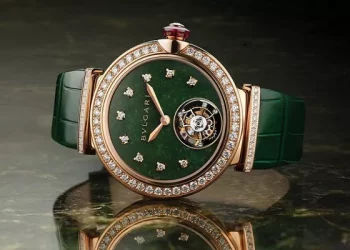A mechanical watch is a beautifully crafted timepiece that relies on a complex system of gears, springs, and a mainspring to keep accurate time. Unlike quartz watches that use a battery, mechanical watches require manual winding to keep the mainspring fully charged and the watch running accurately. Winding a mechanical watch can seem daunting, but with a few simple steps, anyone can learn to wind their watch and keep it running smoothly.
- Step 1: Determine the type of movement
Before winding a mechanical watch, it’s important to determine the type of movement the watch uses. There are two main types of movements – manual wind and automatic wind. Manual wind watches require regular winding to keep them running, while automatic watches are self-winding and don’t require manual winding. If you’re unsure of the type of movement your watch uses, consult the owner’s manual or a professional watchmaker.
- Step 2: Remove the watch from your wrist
It’s important to remove the watch from your wrist before winding to avoid any accidental damage or overwinding. Place the watch on a stable surface with the dial facing up.
- Step 3: Determine the correct direction to wind
Once you’ve determined that the watch is a manual wind movement, it’s important to determine the correct direction to wind. Most watches wind clockwise, but some watches may wind counterclockwise or in both directions. Again, consult the owner’s manual or a professional watchmaker to determine the correct direction to wind.
- Step 4: Wind the watch
With the watch securely on a stable surface and the correct direction determined, begin winding the watch by gently turning the crown in the appropriate direction. Don’t force the crown or overwind the watch, as this can cause damage to the movement. As a general rule, stop winding once you feel resistance, which indicates the mainspring is fully wound.
- Step 5: Set the time
Once the watch is fully wound, set the time by pulling the crown out to the correct position and turning the hands to the correct time. Be gentle when setting the time, and avoid moving the hands backwards, as this can cause damage to the movement.
- Step 6: Reattach the watch to your wrist
Once the watch is wound and the time is set, reattach the watch to your wrist and enjoy wearing it.
Conclusion
Winding a mechanical watch is a simple process that requires a few basic steps. By determining the correct type of movement, the direction to wind, and taking care not to overwind or force the crown, anyone can keep their mechanical watch running accurately and smoothly. If you have any concerns about winding your watch or the overall health of the movement, consult a professional watchmaker for advice and assistance.












































